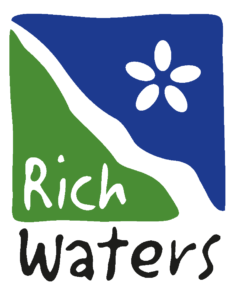Summary
The purpose with the methodology is to inspire and teach planners working at Swedish municipalities how to use GIS-data to assess risk associated with flooding and contaminant transport. The target group is mainly planners that are used to making data interpretations in an online GIS-environment but that does not have knowledge on how to work with GIS-data in GIS-software.
The methodology consists of two reports. These are delivered as part of the project Life IP Rich Waters for the county boards of Stockholm County and Västmanlands County.
Report 1 deals with how to familiarize with- and analyze a catchment using nationally available geodata, such as for instance land use, surface water networks, and flooding maps, and how available datasets relate to prerequisites to flooding and soil movements (for instance landslides) with a focus on the limitation of data. Report 1 also suggest how to include contamination data in risk analysis related to flooding and soil movements. This includes a methodology on how to group contaminant producing industries, which reflects general characteristics and transport mechanisms. The aim of grouping the industries is to get an idea of wheather or not there is an increased contamination risk associated with contaminant transport in the occurrence of flooding. The basis of report 3 is the Swedish dataset “EBH-databasen”, which is a national database owned by the country boards of Sweden where industries that could cause contamination of some sort are identified and mapped.
Read the full report in Swedish
Report 2 deals with up-stream measures that can be taken to decrease the water volume in a river or catchment, and thus limit flooding. Focus lies on green solutions as for instance flooding of green land-use (rural areas), and green roofs and rain gardens (heavily populated areas). The report presents how to approximate the flow-limiting potential of a certain measure. The aim of the report Is for the reader to familiarize with general concepts, to learn how to make a first estimate of the flow reducing potential of the landscape with a catchment.
Read the full report in Swedish
Examples of the analysis in the reports are given for two catchments in south-central Sweden, the 3685 km2 rural catchment of Arbogaån and the 39,6 km2 urban catchment of Bällstaån.
